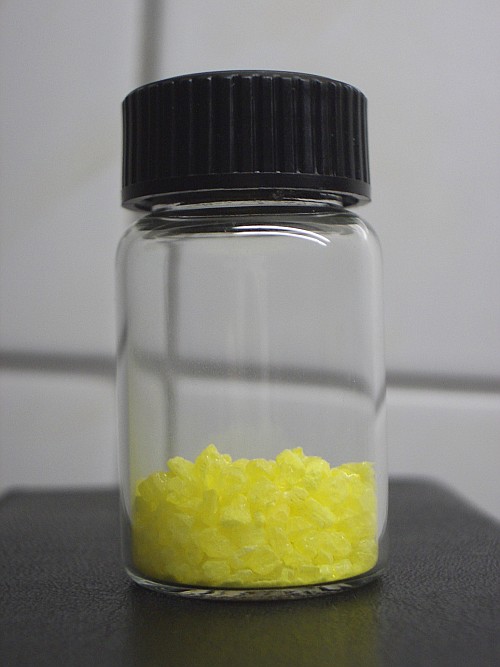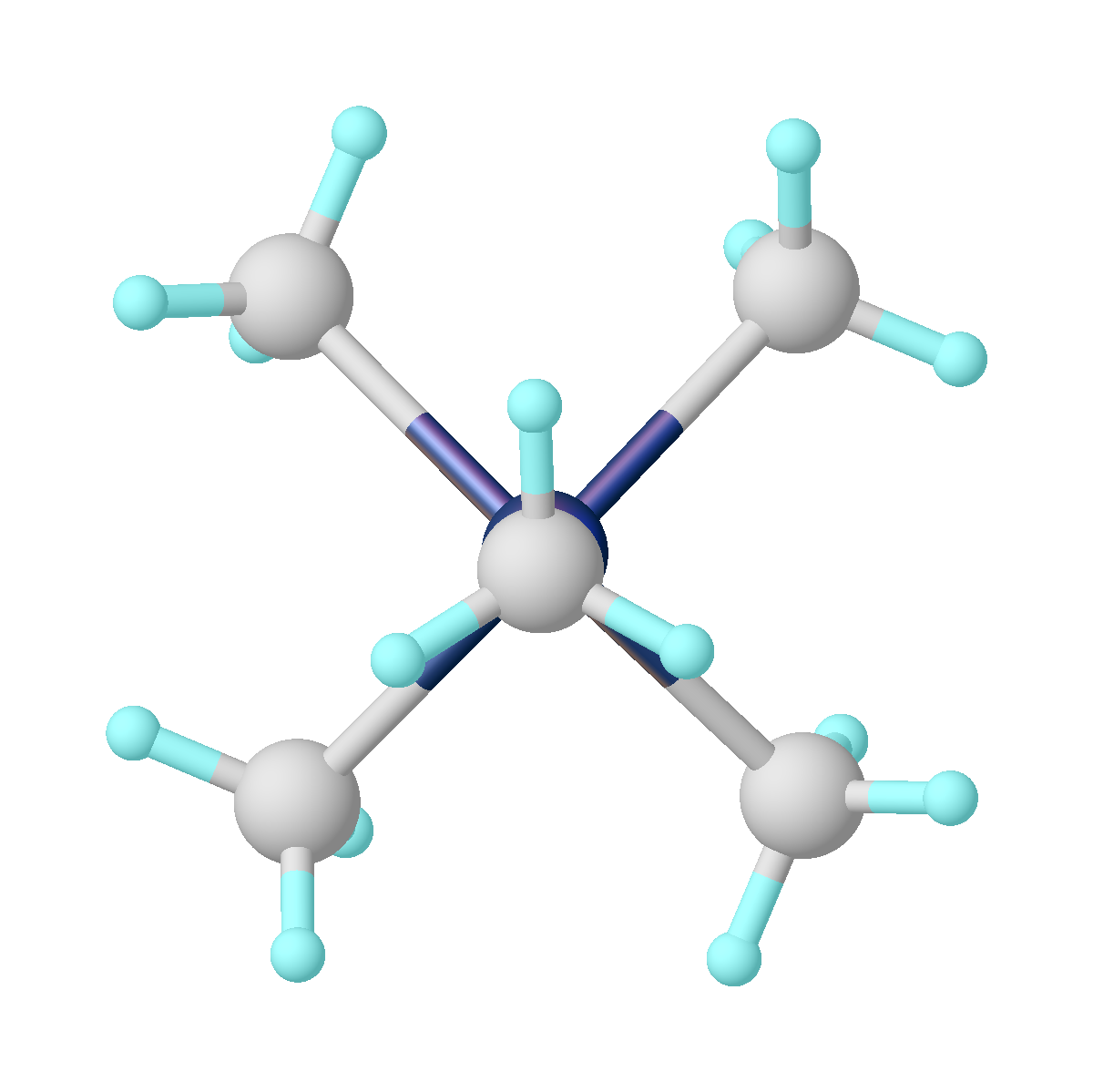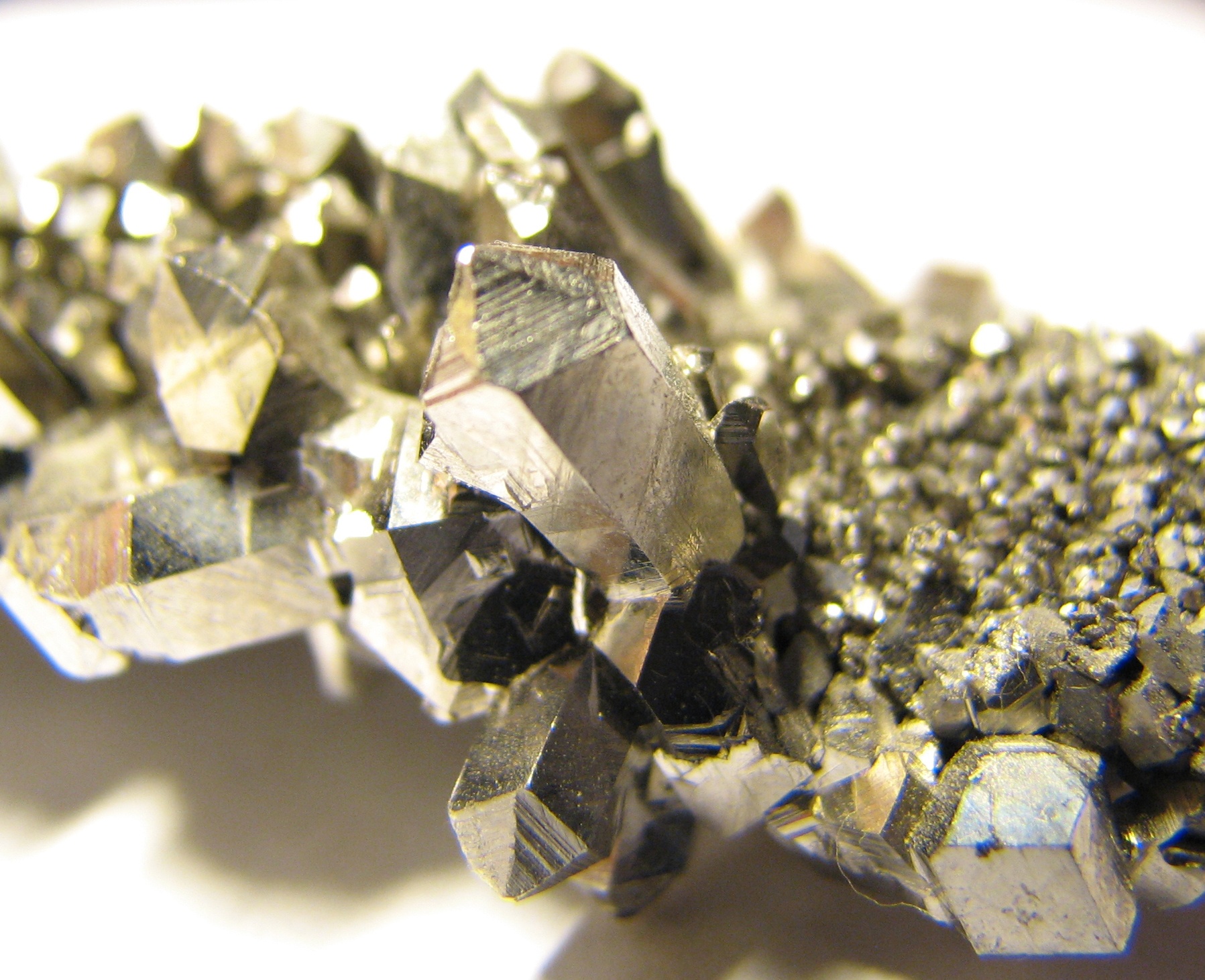|
Ilmenium
Ilmenium was the proposed name for a new element found by the chemist R. Hermann in 1847. During the analysis of the mineral samarskite, he concluded that it does contain an element similar to niobium and tantalum. The similar reactivity of niobium and tantalum complicated preparation of pure samples of the metals and therefore several new elements were proposed, which were later found to be mixtures of niobium and tantalum. The differences between tantalum and niobium, and the fact that no other similar element was present, were unequivocally demonstrated in 1864 by Christian Wilhelm Blomstrand, and Henri Etienne Sainte-Claire Deville, as well as Louis J. Troost, who determined the formulas of some of the compounds in 1865 and finally by the Swiss chemist Jean Charles Galissard de Marignac Although it had been proven that ilmenium is only a mixture of niobium and tantalum, Hermann continued publishing articles on ilmenium for several years. The name "ilmenium" is a reference to t ... [...More Info...] [...Related Items...] OR: [Wikipedia] [Google] [Baidu] |
Niobium
Niobium is a chemical element with chemical symbol Nb (formerly columbium, Cb) and atomic number 41. It is a light grey, crystalline, and ductile transition metal. Pure niobium has a Mohs hardness rating similar to pure titanium, and it has similar ductility to iron. Niobium oxidizes in Earth's atmosphere very slowly, hence its application in jewelry as a hypoallergenic alternative to nickel. Niobium is often found in the minerals pyrochlore and columbite, hence the former name "columbium". Its name comes from Greek mythology: Niobe, daughter of Tantalus, the namesake of tantalum. The name reflects the great similarity between the two elements in their physical and chemical properties, which makes them difficult to distinguish. English chemist Charles Hatchett reported a new element similar to tantalum in 1801 and named it columbium. In 1809, English chemist William Hyde Wollaston wrongly concluded that tantalum and columbium were identical. German chemist Heinrich Rose determin ... [...More Info...] [...Related Items...] OR: [Wikipedia] [Google] [Baidu] |
Niobium
Niobium is a chemical element with chemical symbol Nb (formerly columbium, Cb) and atomic number 41. It is a light grey, crystalline, and ductile transition metal. Pure niobium has a Mohs hardness rating similar to pure titanium, and it has similar ductility to iron. Niobium oxidizes in Earth's atmosphere very slowly, hence its application in jewelry as a hypoallergenic alternative to nickel. Niobium is often found in the minerals pyrochlore and columbite, hence the former name "columbium". Its name comes from Greek mythology: Niobe, daughter of Tantalus, the namesake of tantalum. The name reflects the great similarity between the two elements in their physical and chemical properties, which makes them difficult to distinguish. English chemist Charles Hatchett reported a new element similar to tantalum in 1801 and named it columbium. In 1809, English chemist William Hyde Wollaston wrongly concluded that tantalum and columbium were identical. German chemist Heinrich Rose determin ... [...More Info...] [...Related Items...] OR: [Wikipedia] [Google] [Baidu] |
Tantalum
Tantalum is a chemical element with the symbol Ta and atomic number 73. Previously known as ''tantalium'', it is named after Tantalus, a villain in Greek mythology. Tantalum is a very hard, ductile, lustrous, blue-gray transition metal that is highly corrosion-resistant. It is part of the refractory metals group, which are widely used as components of strong high-melting-point alloys. It is a group 5 element, along with vanadium and niobium, and it always occurs in geologic sources together with the chemically similar niobium, mainly in the mineral groups tantalite, columbite and coltan. The chemical inertness and very high melting point of tantalum make it valuable for laboratory and industrial equipment such as reaction vessels and vacuum furnaces. It is used in tantalum capacitors for electronic equipment such as computers. Tantalum is considered a technology-critical element by the European Commission. History Tantalum was discovered in Sweden in 1802 by Anders Ekeberg, ... [...More Info...] [...Related Items...] OR: [Wikipedia] [Google] [Baidu] |
Samarskite
Samarskite is a radioactive rare earth mineral series which includes samarskite-(Y), with the chemical formula and samarskite-(Yb), with the chemical formula . The formula for samarskite-(Y) is also given as . Samarskite crystallizes in the orthorhombic - dipyramidal class as black to yellowish brown stubby prisms although it is typically found as anhedral masses. Specimens with a high uranium content are typically metamict and appear coated with a yellow brown earthy rind. Samarskite occurs in rare earth bearing granite pegmatites with other rare minerals. It occurs in association with columbite, zircon, monazite, uraninite, aeschynite, magnetite, albite, topaz, beryl, garnet, muscovite and biotite. Samarskite was first described in 1847 for an occurrence in Miass, Ilmen Mountains, Southern Ural Mountains of Russia. The chemical element samarium was first isolated from a specimen of samarskite in 1879. Samarium was named after samarskite which was named for the Russian mine ... [...More Info...] [...Related Items...] OR: [Wikipedia] [Google] [Baidu] |
Christian Wilhelm Blomstrand
Christian Wilhelm Blomstrand (20 October 1826 – 5 November 1897) was a Swedish mineralogist and chemist. He was a professor at the University of Lund from 1862-1895, where he isolated the element niobium in 1864. He developed an early version of the periodic table and made advances in understanding the chemistry of coordination compounds. Blomstrand published textbooks in chemistry and was well-known internationally for his scientific contributions. Education and career Blomstrand was born in Växjö, Sweden to his father John Blomstrand, who was a teacher, and his wife Severina Rodhe. Blomstrand studied mineralogy at the University of Lund, where he earned a philosophy degree in 1850. He then became interested in chemistry and was the first recipient of the Berzelius scholarship. In 1854, he completed his habilitation for research on bromine and iodine compounds of tin. With the exception of lecturing at the Elementary Technical School of Malmö in 1855 and working a ... [...More Info...] [...Related Items...] OR: [Wikipedia] [Google] [Baidu] |
Henri Etienne Sainte-Claire Deville
Henri is an Estonian, Finnish, French, German and Luxembourgish form of the masculine given name Henry. People with this given name ; French noblemen :'' See the 'List of rulers named Henry' for Kings of France named Henri.'' * Henri I de Montmorency (1534–1614), Marshal and Constable of France * Henri I, Duke of Nemours (1572–1632), the son of Jacques of Savoy and Anna d'Este * Henri II, Duke of Nemours (1625–1659), the seventh Duc de Nemours * Henri, Count of Harcourt (1601–1666), French nobleman * Henri, Dauphin of Viennois (1296–1349), bishop of Metz * Henri de Gondi (other) * Henri de La Tour d'Auvergne, Duke of Bouillon (1555–1623), member of the powerful House of La Tour d'Auvergne * Henri Emmanuel Boileau, baron de Castelnau (1857–1923), French mountain climber * Henri, Grand Duke of Luxembourg (born 1955), the head of state of Luxembourg * Henri de Massue, Earl of Galway, French Huguenot soldier and diplomat, one of the principal commanders of Bat ... [...More Info...] [...Related Items...] OR: [Wikipedia] [Google] [Baidu] |
Louis J
Louis may refer to: * Louis (coin) * Louis (given name), origin and several individuals with this name * Louis (surname) * Louis (singer), Serbian singer * HMS Louis, HMS ''Louis'', two ships of the Royal Navy See also Derived or associated terms * Lewis (other) * Louie (other) * Luis (other) * Louise (other) * Louisville (other) * Louis Cruise Lines * Louis dressing, for salad * Louis Quinze, design style Associated names * * Chlodwig, the origin of the name Ludwig, which is translated to English as "Louis" * Ladislav and László - names sometimes erroneously associated with "Louis" * Ludovic, Ludwig (other), Ludwig, Ludwick, Ludwik, names sometimes translated to English as "Louis" {{disambiguation ... [...More Info...] [...Related Items...] OR: [Wikipedia] [Google] [Baidu] |
Jean Charles Galissard De Marignac
Jean Charles Galissard de Marignac (24 April 1817 – 15 April 1894) was a Swiss chemist whose work with atomic weights suggested the possibility of isotopes and the packing fraction of nuclei. His study of the rare earth elements led to his discovery of ytterbium in 1878 and co-discovery of gadolinium in 1880. He was considered "one of the great chemists of the nineteenth century", particularly in the area of inorganic chemistry. On 13 September 2011, the site of his laboratory at the University of Geneva was designated a historical chemical landmark of Switzerland. Life and work Jean Charles Galissard de Marignac was born in Geneva on 24 April 1817, to Jacob Galissard de Marignac, a judge, and Susanne Le Royer, a sister of well-known chemist and physiologist Elie Le Royer. Le Royer's pharmacy was in the same building as their home. Marignac attended the École polytechnique in Paris with the intention of becoming a mining engineer. From 1837 to 1839, he studied at the ... [...More Info...] [...Related Items...] OR: [Wikipedia] [Google] [Baidu] |
Annales De Chimie Et De Physique
__NOTOC__ ''Annales de chimie et de physique'' ( French for ''Annals of Chemistry and Physics'') is a scientific journal founded in Paris, France, in 1789 under the title ''Annales de chimie''. One of the early editors was the French chemist Antoine Lavoisier. Lavoisier, an aristocrat, was guillotined in May 1794, ostensibly for tax fraud: and the journal was not published from 1794 to 1796 while the Reign of Terror was at its height under the French Directory. In 1815, it became the ''Annales de chimie et de physique'', and was published under that name for the next 100 years. In 1914, it split into two successor journals. The first one, '' Annales de physique'', was latterly published by EDP Sciences under the same name up to 2009, when it became integrated in the ''European Physical Journal'' series as the '' European Physical Journal H – Historical Perspectives on Contemporary Physics''. The second successor, ''Annales de chimie'', later became '' Annales de chimie: Scien ... [...More Info...] [...Related Items...] OR: [Wikipedia] [Google] [Baidu] |
Ilmensky Mountains
The Ilmensky Mountains (russian: links=no, Ильменские горы, translit=Il'menskiye gory) are located in the Southern Urals in the Chelyabinsk Oblast on the administrative territory of Miass in Chebarkulsky and Argayashsky districts. They are on the Tentative list of UNESCO World Heritage Sites. They are famous for their precious (like topaz and beryl) and semi-precious stones, such as amazonite and rare metals, found in pegmatites and nepheline syenites. Now most part of Ilmensky Mountains are inside strict Ilmen Nature Reserve Ilmen Nature Reserve (russian: Ильменский заповедник) (also Ilmensky) is a Russian 'zapovednik' (strict nature reserve) that was created by decree of Vladimir Lenin, in 1920 as a mineralogical nature reserve. It is the site of ... and all mining activities there are prohibited. References Mountain ranges of Russia Ural Mountains Landforms of Chelyabinsk Oblast {{ChelyabinskOblast-geo-stub ... [...More Info...] [...Related Items...] OR: [Wikipedia] [Google] [Baidu] |
Google Books
Google Books (previously known as Google Book Search, Google Print, and by its code-name Project Ocean) is a service from Google Inc. that searches the full text of books and magazines that Google has scanned, converted to text using optical character recognition (OCR), and stored in its digital database.The basic Google book link is found at: https://books.google.com/ . The "advanced" interface allowing more specific searches is found at: https://books.google.com/advanced_book_search Books are provided either by publishers and authors through the Google Books Partner Program, or by Google's library partners through the Library Project. Additionally, Google has partnered with a number of magazine publishers to digitize their archives. The Publisher Program was first known as Google Print when it was introduced at the Frankfurt Book Fair in October 2004. The Google Books Library Project, which scans works in the collections of library partners and adds them to the digital invent ... [...More Info...] [...Related Items...] OR: [Wikipedia] [Google] [Baidu] |
Misidentified Chemical Elements
Chemical element A chemical element is a species of atoms that have a given number of protons in their nuclei, including the pure substance consisting only of that species. Unlike chemical compounds, chemical elements cannot be broken down into simpler sub ...s that have been mistakenly "discovered". Further investigation showed that their discovery was either mistaken, that they have been mistaken from an already-known element, or mixture of two elements, or that they indicated a failing in theory where a new element had been assumed rather than some previously unknown behaviour. References {{DEFAULTSORT:Misidentified chemical elements Chemistry-related lists ... [...More Info...] [...Related Items...] OR: [Wikipedia] [Google] [Baidu] |




.jpg)
